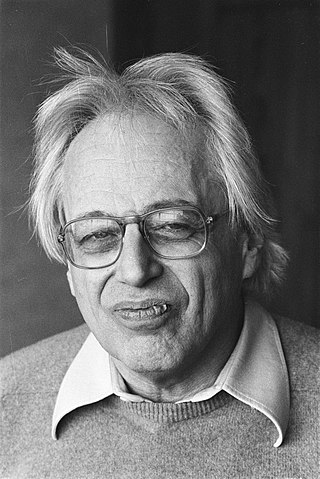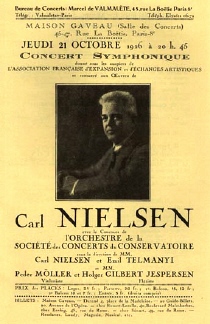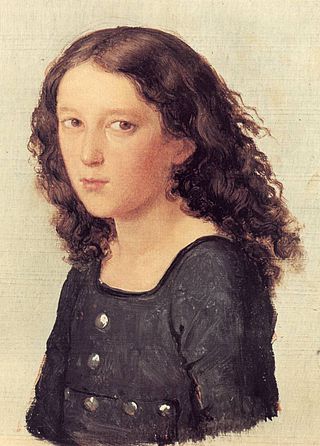Related Research Articles

In music, a cadenza, is, generically, an improvised or written-out ornamental passage played or sung by a soloist(s), usually in a "free" rhythmic style, and often allowing virtuosic display. During this time the accompaniment will rest, or sustain a note or chord. Thus an improvised cadenza is indicated in written notation by a fermata in all parts. A cadenza will usually occur over either the final or penultimate note in a piece, the lead-in, or the final or penultimate note in an important subsection of a piece. A cadenza can also be found before a final coda or ritornello.
John Paul Corigliano Jr. is an American composer of contemporary classical music. With over 100 compositions, he has won accolades including a Pulitzer Prize, five Grammy Awards, Grawemeyer Award for Music Composition, and an Academy Award.

The Violin Concerto in D minor, Op. 47 of Jean Sibelius, originally composed in 1904 and revised in 1905, is the only concerto by Sibelius. It is symphonic in scope and included an extended cadenza for the soloist that takes on the role of the development section in the first movement.
Václav Nelhýbel was a Czech-American composer, mainly of works for student performers.

The Concerto for Violin and Orchestra by György Ligeti is a violin concerto written for and dedicated to the violinist Saschko Gawriloff. A performance of the work lasts about 28 minutes.

The Concerto for Flute, Harp, and Orchestra in C major, K. 299/297c, is a concerto by Wolfgang Amadeus Mozart for flute, harp, and orchestra. It is one of only two true double concertos that he wrote, as well as the only piece of music by Mozart for the harp. The piece is one of the most popular such concertos in the repertoire, as well as often being found on recordings dedicated to either one of its featured instruments.

Carl Nielsen's Concerto for Flute and Orchestra was written in 1926 for Holger Gilbert-Jespersen, who succeeded Paul Hagemann as flautist of the Copenhagen Wind Quintet. The concerto, in two movements, was generally well received at its premiere in Paris in October 1926 where Nielsen had introduced a temporary ending. The first complete version was played in Copenhagen the following January. The flute concerto has become part of the international repertoire.
The Concerto Fantasy for Two Timpanists and Orchestra is a double timpani concerto written by Philip Glass in 2000. It is paired with the Cello Concerto on Vol. I of Glass' Concerto Project, a set of eight concerti by the composer. A typical performance of the work lasts 25–28 minutes. It was written for Jonathan Haas and later recorded by Evelyn Glennie, and was premiered by Haas and Svet Stoyanov with the American Symphony Orchestra in Avery Fisher Hall, Lincoln Center, conducted by Leon Botstein. The work was commissioned jointly by the American Symphony Orchestra, the Peabody Symphony, the Milwaukee Symphony, the St. Louis Symphony and the Phoenix Symphony. In 2004, a transcription for wind ensemble was written by Mark Lortz, which debuted at Peabody Institute in 2005.
The Violin Concerto is a concerto for violin and orchestra in two movements by the American composer Christopher Rouse. The work was commissioned for violinist Cho-Liang Lin by the Aspen Music Festival and School and funded in part by a grant from the National Endowment for the Arts. It was completed August 18, 1991 and is dedicated to Cho-Liang Lin.
The Concerto for Clarinet and Orchestra is a clarinet concerto in three movements by the American composer John Corigliano. The work was commissioned by the New York Philharmonic for the clarinetist Stanley Drucker. It was composed in the summer and fall of 1977 and was first performed in New York City on December 6, 1977, by Drucker and the New York Philharmonic conducted by Leonard Bernstein. The composition is dedicated to Drucker and Bernstein.
The Concerto for Oboe and Orchestra is a composition for solo oboe and orchestra by the American composer John Corigliano. The work was commissioned by the New York State Council on the Arts and was first performed in Carnegie Hall on November 9, 1975, by the oboist Bert Lucarelli and the American Symphony Orchestra under the conductor Kazuyoshi Akiyama.

The Concerto for Piano, Violin, and Strings in D minor, MWV O4, also known as the Double Concerto in D minor, was written in 1823 by Felix Mendelssohn when he was 14 years old. This piece is Mendelssohn's fourth work for a solo instrument with orchestral accompaniment, preceded by a Largo and Allegro in D minor for Piano and Strings MWV O1, the Piano Concerto in A Minor MWV O2, and the Violin Concerto in D minor MWV O3. Mendelssohn composed the work to be performed for a private concert on May 25, 1823 at the Mendelssohn home in Berlin with his violin teacher and friend, Eduard Rietz. Following this private performance, Mendelssohn revised the scoring, adding winds and timpani and is possibly the first work in which Mendelssohn used winds and timpani in a large work. A public performance was given on July 3, 1823 at the Berlin Schauspielhaus. Like the A minor piano concerto (1822), it remained unpublished during Mendelssohn's lifetime and it wasn't until 1999 when a critical edition of the piece was available.
The Concerto for Clarinet is a composition for solo clarinet and orchestra by the American composer Joan Tower. The work was commissioned by the Walter W. Naumburg Foundation for the clarinetist Charles Neidich, to whom the piece is dedicated.
The Flute Concerto is a composition for solo flute and orchestra by the American composer Elliott Carter. The work was commissioned by Elena Bashkirova for the Jerusalem International Chamber Music. Carter began the composition in September 2007 and completed it in March 2008 at the age of 99. The piece was first performed at the Jerusalem International YMCA on September 9, 2008 by the flutist Emmanuel Pahud and the Jerusalem International Chamber Music Ensemble under the conductor Daniel Barenboim.
The Concerto for Flute is a composition for solo flute and orchestra by the American composer Joan Tower. The work was commissioned by the American Composers Orchestra and was composed in 1989. It was first performed at Carnegie Hall on January 28, 1990, by the flutist Carol Wincenc and the American Composers Orchestra under the conductor Hugh Wolff. The piece is dedicated to Carol Wincenc.
Interventions is a composition for solo piano and orchestra by the American composer Elliott Carter. The work was composed at the behest of the pianist Daniel Barenboim and the conductor James Levine to celebrate Carter's 100th birthday. The piece was completed on April 16, 2007 and was first performed in Symphony Hall, Boston on December 4, 2008 by Daniel Barenboim and the Boston Symphony Orchestra under James Levine.
The Concerto for Two Flutes and Orchestra is a composition for two flutes and orchestra by the American composer Steven Stucky. The work was commissioned by the Los Angeles Philharmonic, for which Stucky was formerly composer-in-residence and then New Music Adviser. The piece was composed from October through December 1994 and was given its world premiere in Los Angeles by the Los Angeles Philharmonic under the conductor Esa-Pekka Salonen on February 23, 1995.
The Concerto for Piano and Orchestra is a piano concerto by the American composer John Corigliano. The work was commissioned by the San Antonio Symphony and was first performed on April 7, 1968, by the pianist Hilde Somer and the San Antonio Symphony under the direction of Victor Alessandro. The piece is dedicated to John Atkins.
Sculpture is an orchestral composition by the Finnish composer Magnus Lindberg. The music was commissioned by the Los Angeles Philharmonic with support from the Koussevitzky Music Foundation to celebrate the orchestra's inaugural season at the Walt Disney Concert Hall. Its world premiere was given by the Los Angeles Philharmonic under the direction of Esa-Pekka Salonen on October 6, 2005.
Missy Mazzoli's Violin Concerto (Procession) was composed in 2021 for the violinist Jennifer Koh on a commission from the National Symphony Orchestra, the Cincinnati Symphony Orchestra, and BBC Radio 3, with support by ARCO Collaborative. Its world premiere was given by Koh and the National Symphony Orchestra conducted by Gemma New at the John F. Kennedy Center for the Performing Arts on February 3, 2022.
References
- 1 2 3 4 5 Corigliano, John (2013). "Pied Piper Fantasy, Concerto for Flute and Orchestra". G. Schirmer Inc. Retrieved May 9, 2016.
- ↑ Holland, Bernard (January 31, 1982). "Highbrow Music To Hum". The New York Times . Retrieved May 9, 2016.
- ↑ Swed, Mark (January 3, 1993). "Q&A : Music for Our Time : John Corigliano finds a widespread audience drawn to his First Symphony, an intensely personal work written for friends lost to AIDS". Los Angeles Times . Retrieved May 9, 2016.
- ↑ Hurst, Jack (December 13, 1987). "Chicago's 'Pied Piper' On Disc". Chicago Tribune . Retrieved May 9, 2016.
- ↑ Reichel, Edward (November 21, 2004). "CD reviews: Concerto recordings offer variation in styles and intensity". Deseret News . Archived from the original on June 1, 2016. Retrieved May 9, 2016.
- ↑ Oliver, Michael (October 1988). "Corigliano Flute Concerto; Voyage". Gramophone . Retrieved May 9, 2016.
- ↑ Kosman, Joshua; Hurwitt, Robert; Winn, Steven (November 7, 2004). "CD REVIEWS". San Francisco Chronicle . Retrieved May 9, 2016.